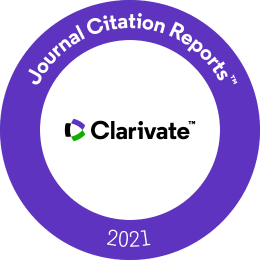
Source: Journal Citation ReportsTM from ClarivateTM 2022
Journal Impact FactorTM (2022)
Journal Citation IndicatorTM (2022)

Source: Journal Citation ReportsTM from ClarivateTM 2022
This statement is intended to provide information and guidance regarding survey methods and the human participant protections review process. The goal is to provide guidelines, acknowledging the importance of protecting survey participants while maintaining the integrity of the survey research process. This information is provided with the aim to help investigators better understand how these processes apply to survey research. It deals with such issues as survey participation and risk, anonymity and confidentiality, benefits of surveys, and issues of informed consent. This statement is prepared as an aid to the authors you in their deliberations about whether appropriate consideration has been given to the protection of human research participants when a study involving survey interviews or questionnaires is proposed. It is intended to address a wide range of situations. Key summary points are presented below.
Participation in surveys rarely puts respondents at more than the minimal risks of everyday of life. Most surveys offer benefits to advancing knowledge and to society broadly. The survey is the only method capable of providing generalizable information on a variety of aspects of the human condition. Survey data are essential to advancing our understanding of social, psychological, and political processes, and evaluation and improvement of public policy. Documentation of consent is often not feasible in a survey and may be potentially damaging to participation. However, in virtually all survey-based studies, the key elements of consent can be provided to respondents in a concise way at the beginning of a survey in the brief introductory statements of a telephone interview, in a cover letter for a self-administered survey or in the introductory screen in a web survey. This is true regardless of level of risk, and is consistent with the contemporary view of consent as an ongoing process rather than a document.